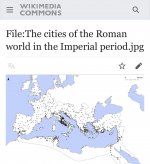The Urbino (Marche) JL70 sample was labeled on the original archeological paper, as a late republican sample. He was buried on a rural roman context. According to archeologists after the analysis of the coins that were found on the tomb, he died on the 1st Century BCE (late Republic period). It was wrongly assigned to the Late antiquity period. From the supplementary material of the paper "T. 68 (R1557) is described (Mercando et al. 1982) as a single earthen grave with an E-W orientation. The disposition of the bones in the image provided and the indication of the presence of iron nails along the margins of the grave suggest the presence of a perishable, possibly wooden, casket. Grave goods included a bronze coin and pottery fragments. Archaeological indicators place the burials to the last quarter of the 1st century BC."
His autosomal confirmed that he was a local, considered as a “rural plaebean”, so probably JL70 was there for at least some generations.
JL70 was probably born somewhere between Anatolia and the Aegean, hopefully the publication of the Myceanean JL70 from the Peloponnese will help us on clearing this matter. If it is confirmed, JL70 was probably present on the Eastern Mediterranean since Bronze age, so part of its subclades probably also moved on different periods of time from East to West and vice-versa.
Apart from the Urbino sample, the other older JL70’s samples were buried as romans, both of them. Regarding their autosomal DNA, one is clearly Eastern Mediterranean but the other one buried on a roman catacomb, under PF5456 shares common ancestors on greek southern Italy as well.
As soon as we will have a confirmation of the origin of JL70, we need to focus on its subclades, to understand when and where they moved on different places. The Finocchio et al. Paper published on Nature on 2018, analyzing ancient alleles stated that at least J-CTS3601 and Z2117, were part of the greek expansion on the Mediterranean, and specially to Magna Graecia.
So we need to confirm our hypothesis with more ancient samples. Regarding Todd's question I will answer him on a different post.


